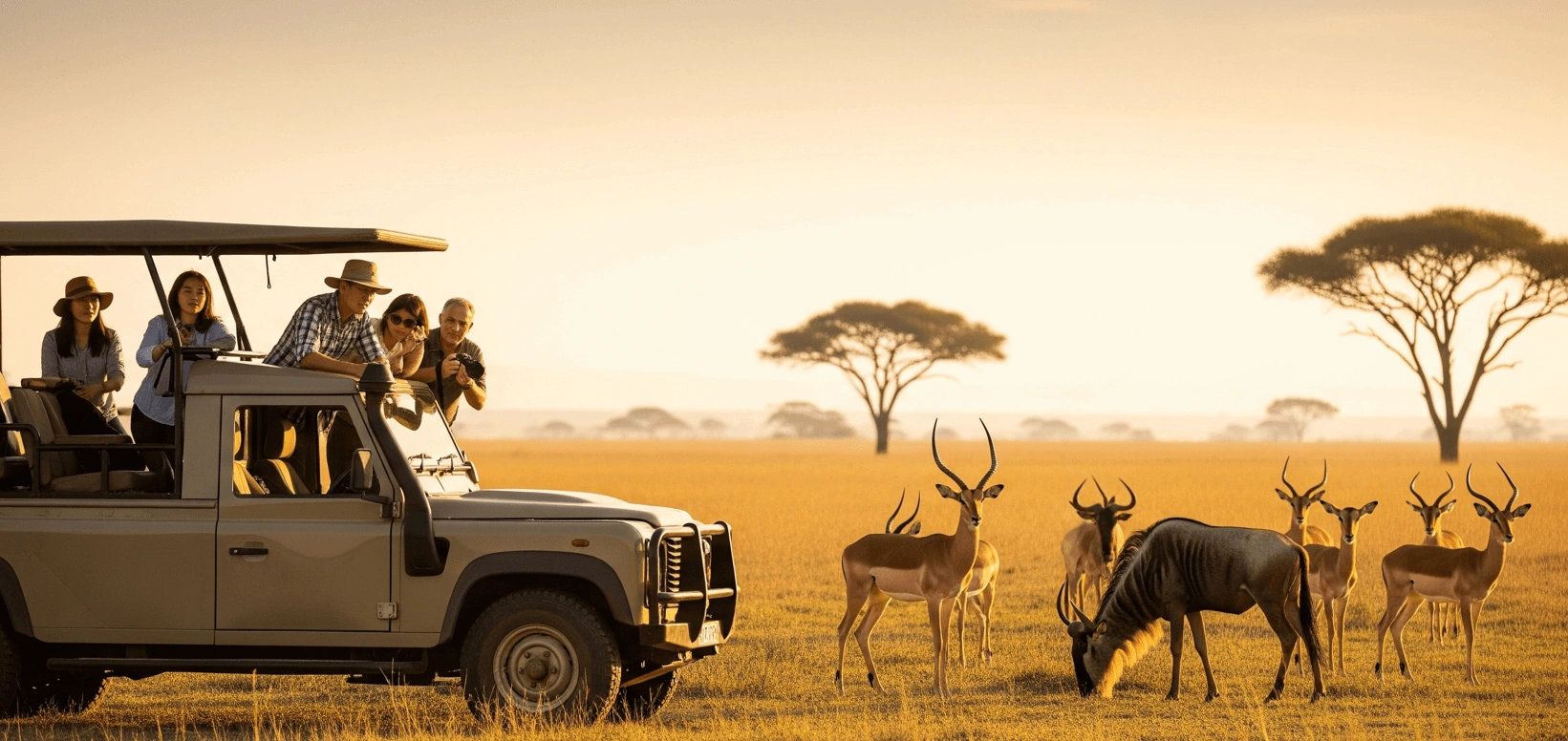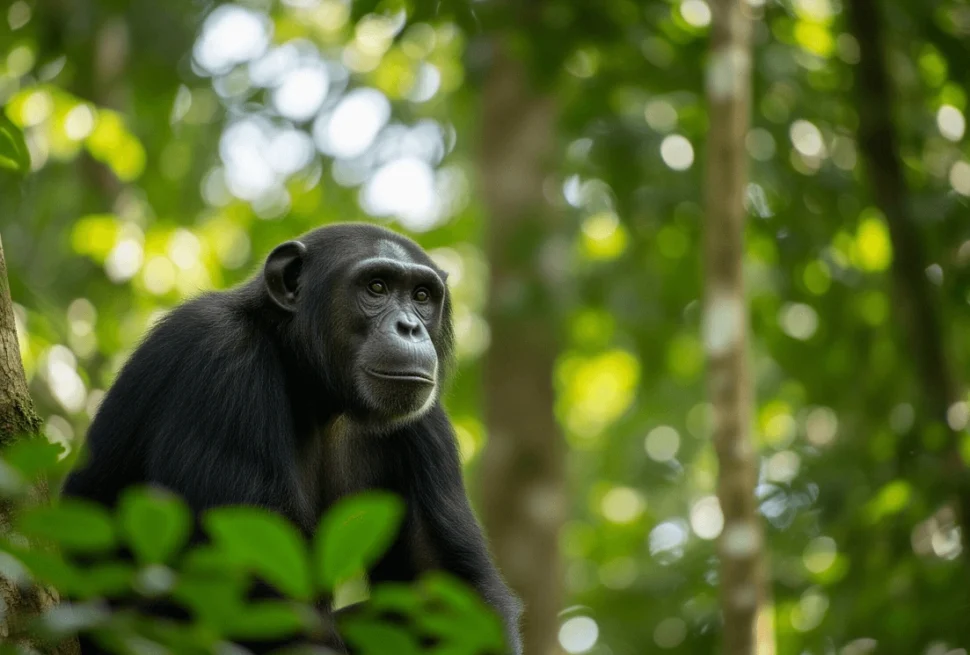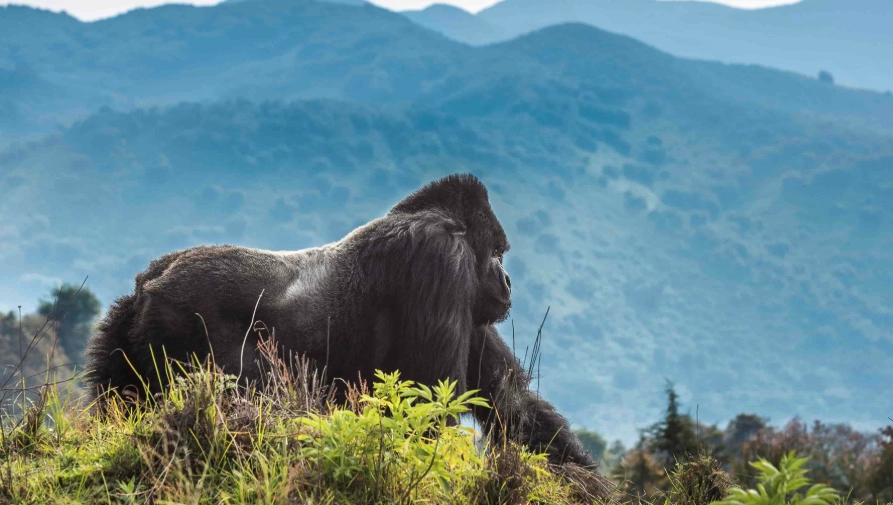You can hear them before you see them — hooves drumming on earth, grass parting as sleek bodies flash across the savanna. Antelopes are the unsung royalty of Uganda’s wild places, each species a living portrait of grace, power, and evolutionary perfection.
While gorillas and lions steal the spotlight, antelopes move quietly through the background. But once you start noticing them, they’re everywhere — each with a story, a survival trick, a territory staked out in hoofbeats and scent marks.
And they’re not just one species. Uganda is home to over 29 types of antelope, from swamp-dwelling sitatungas to massive elands as tall as a horse.
Let’s get to know them.
Key Takeaways
- Uganda is home to more than 29 species of antelopes, thriving across wetlands, forests, and savannas.
- Iconic species include the Uganda kob, Jackson’s hartebeest, eland, bushbuck, and sitatunga.
- Murchison Falls, Queen Elizabeth, and Lake Mburo national parks offer some of the best antelope sightings.
- Different species prefer different habitats: open plains, woodlands, swamps, and even thick forest.
- Antelopes play a vital role in Uganda’s ecosystem and support healthy predator populations.
1. The Uganda Kob
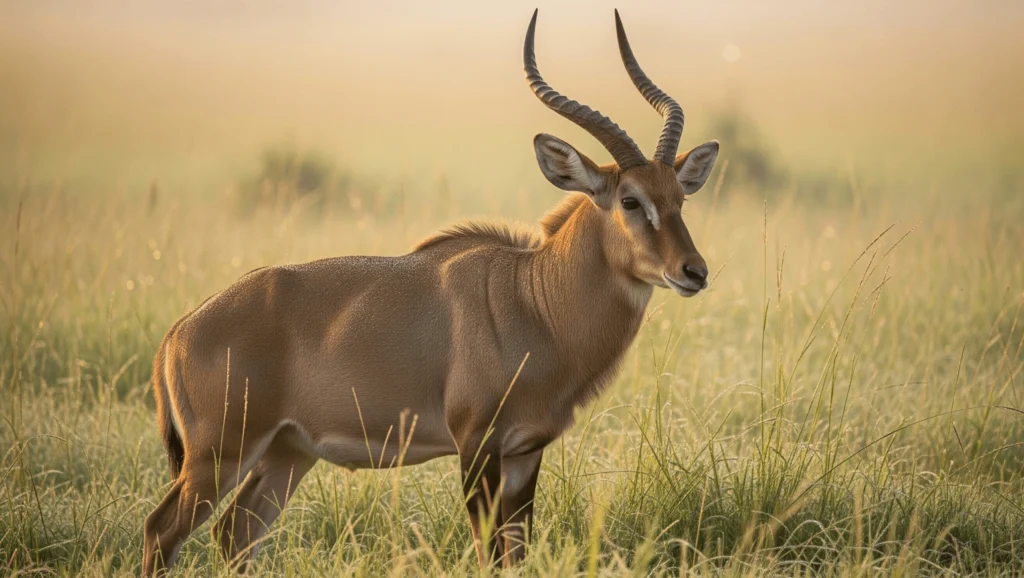
Let’s start with the star of the show. The Uganda kob isn’t just any antelope — it’s the one on the national coat of arms. You’ll find them grazing in herds on the open plains, especially in Queen Elizabeth and Murchison Falls National Parks.
Males have lyre-shaped horns and a habit of defending small “lekking” territories where females choose their mate — not unlike a wildlife version of speed dating.
They’re elegant. Golden. Always alert.
2. Jackson’s Hartebeest
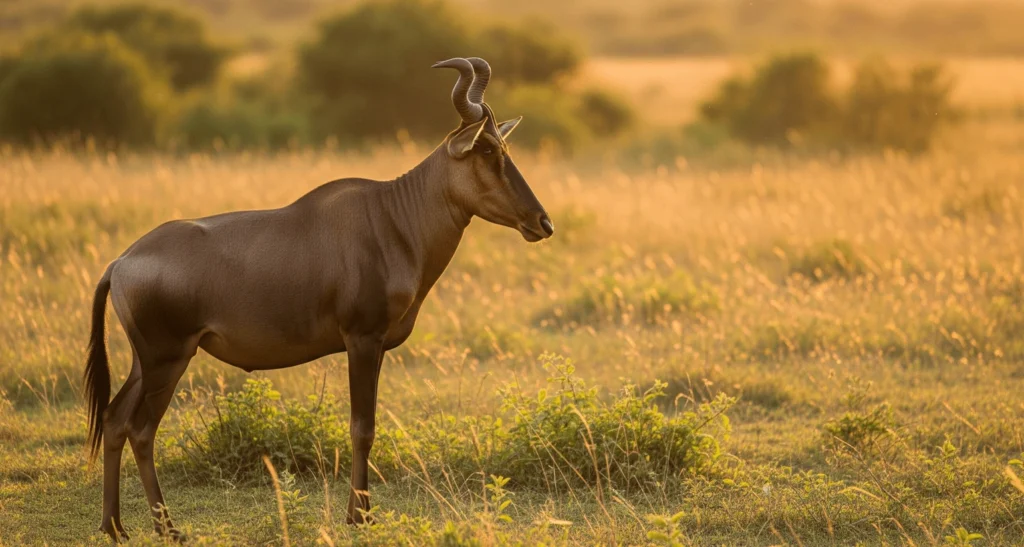
Slightly odd-looking at first — with that elongated face and high shoulders — the Jackson’s hartebeest is actually one of Africa’s fastest antelopes.
They’re loyal to the northern savannas and are especially common in Murchison Falls National Park, where they keep to the open grasslands, scanning the horizon for lions.
Their numbers are fewer now than decades ago, which makes each sighting feel like a privilege.
3. Eland
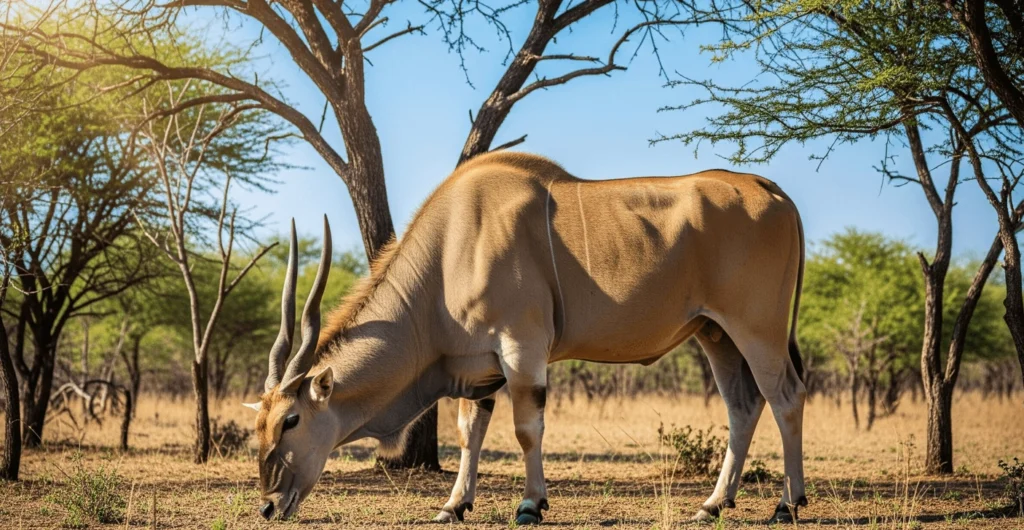
Imagine an antelope that stands almost two meters at the shoulder, weighs nearly a ton, and can still leap two meters into the air.
That’s the eland — Africa’s largest antelope. Despite their size, they move with eerie silence. You might not even notice them at first, until their spiral horns catch the sun or their hooves send a soft clicking sound across the landscape.
You’ll most likely spot them in Lake Mburo National Park, one of Uganda’s best spots for walking safaris.
4. Bushbuck and Waterbuck
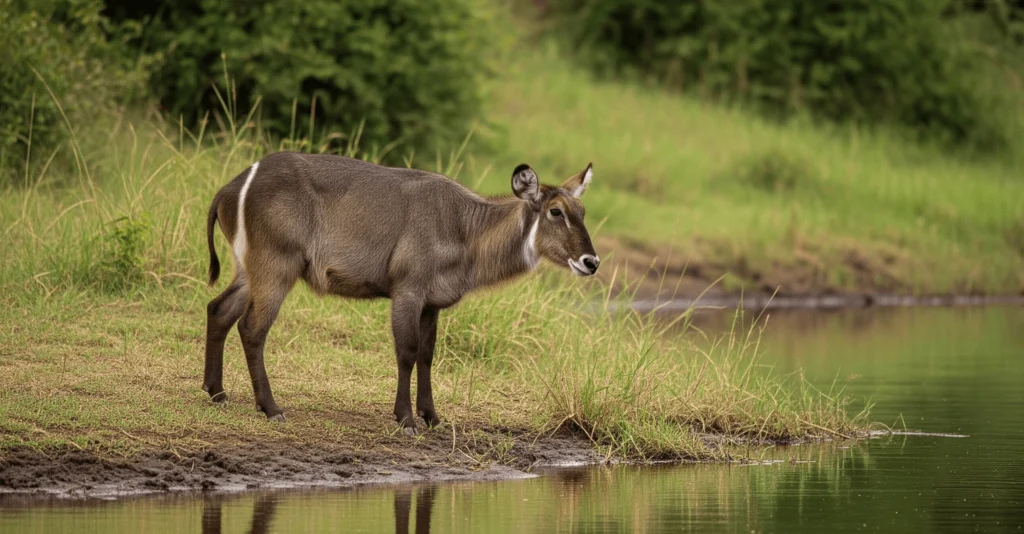
Not all antelopes are built for the open plains.
The bushbuck — shy, solitary, and often tucked along forest edges — is a master of camouflage. You’ll find it near rivers and wooded areas in nearly every national park, including Bwindi Impenetrable and Kibale Forest.
Then there’s the waterbuck: stocky, powerful, with a shaggy coat and that telltale white “target” ring on the rump. True to name, they stay close to water and are often seen lounging along riverbanks in Queen Elizabeth and Murchison.
5. Sitatunga
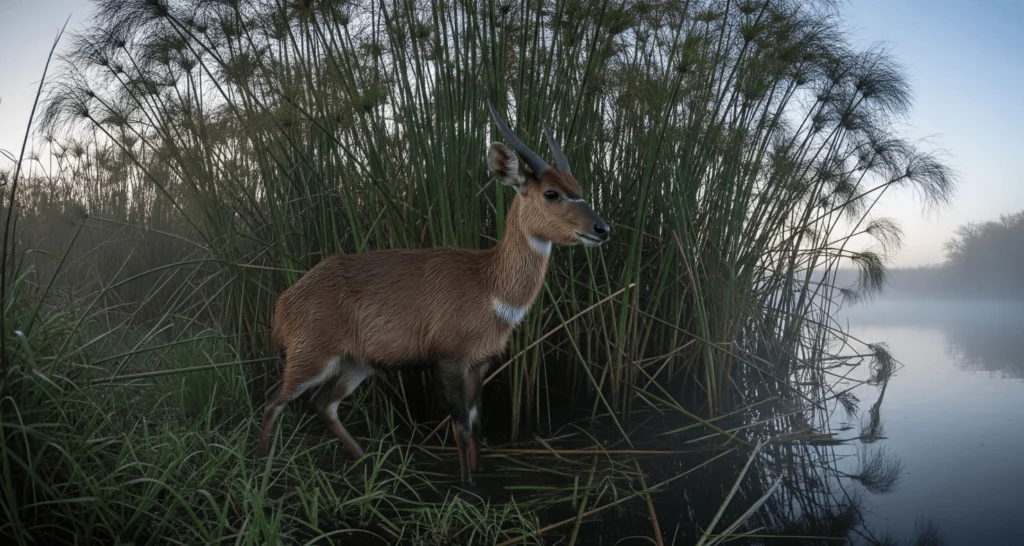
Rare, elusive, and beautifully adapted to the wetlands, the sitatunga is a specialist.
With splayed hooves and waterproof coats, they disappear into papyrus beds and floating islands — especially in places like Mabamba Swamp and the Nile Delta.
You’ll need patience, luck, and a good guide to see one. But when it happens, it feels like stumbling upon a myth.
6. Oribi, Duiker, and Friends
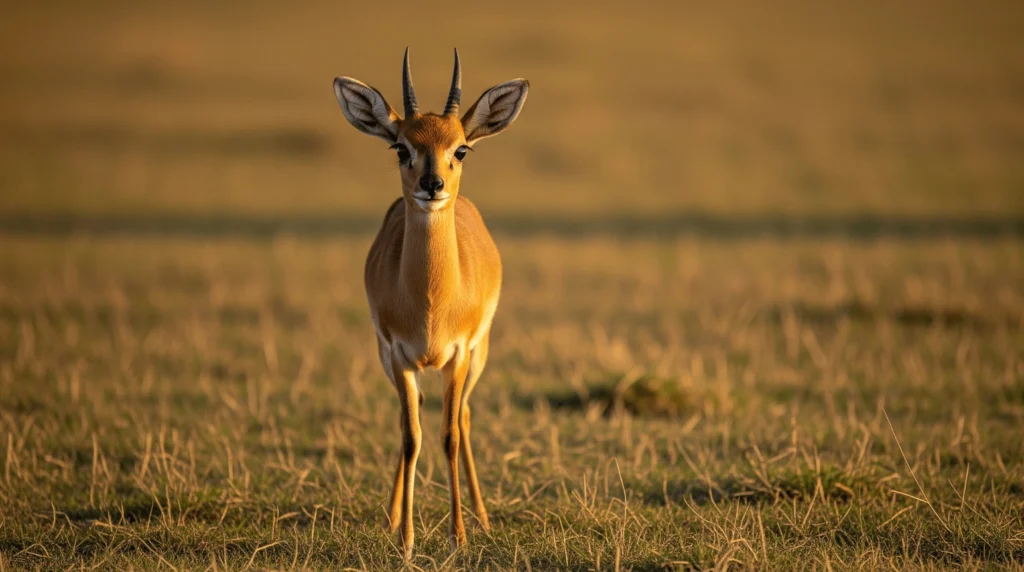
Not all antelope sightings are dramatic.
The oribi — small, sleek, with a curious stare — dots the grasslands in Kidepo Valley and Lake Mburo. Tiny duikers skitter through the undergrowth, usually alone or in pairs. You might not see them, but you’ll hear their rustles, just off-trail.
They’re a reminder that Uganda’s antelope diversity doesn’t just come in large or iconic forms. It’s also about the quiet species, hiding in plain sight.
Where to See Antelopes in Uganda
Murchison Falls National Park
A hotspot for hartebeest, kob, waterbuck, and oribi. The open plains make for easy, rewarding viewing.
Queen Elizabeth National Park
Great for Uganda kob, bushbuck, and waterbuck — especially around the Kasenyi plains and along the Kazinga Channel.
Lake Mburo National Park
Best for eland, impala, and oribi. You can even track them on foot, which adds a primal thrill.
Kidepo Valley National Park
Remote, wild, and filled with lesser-seen species like lesser kudu and roan antelope.
Mabamba Swamp
More famous for shoebills, but also a prime haunt for sitatunga — one of the hardest antelopes to spot.
For travelers interested in walking safaris, Lake Mburo and Ziwa Rhino Sanctuary are prime spots to meet antelopes at eye level.
Why Antelopes Matter
Without antelopes, the whole safari ecosystem starts to unravel.
They’re grazers and browsers, keeping vegetation in check. They feed lions, leopards, and hyenas. They signal a healthy landscape. And they’ve evolved across millions of years to do what they do — leap, sprint, vanish, survive.
Protecting antelopes means protecting the whole wild machine.
For a deeper look at how safari travel can support conservation, see our guide to responsible travel in Uganda.
Antelopes may not be the headline act, but they are the soul of the savanna — graceful, alert, and endlessly diverse.
Next time you’re out there on a game drive or walking trail, slow down. Look closely. That flicker in the grass might just be a story waiting to be told.
Ready to start planning your safari? Request a quote and let’s make it happen.
FAQ: Antelopes in Uganda
How many species of antelope live in Uganda?
Uganda is home to more than 29 species of antelope, ranging from tiny dik-diks to massive elands.
What’s the best park to see antelopes in Uganda?
Murchison Falls and Queen Elizabeth offer the greatest variety. Lake Mburo is excellent for eland and walking safaris.
Can I see antelopes during a gorilla trek?
Possibly — especially bushbuck or duiker in places like Bwindi and Mgahinga. But larger species prefer the open plains.
Are antelopes dangerous?
Not to humans. Most antelopes are shy and quick to flee. Only if cornered — and very rarely — would they pose any risk.
Do I need a special permit to see antelopes?
No. Antelope sightings are included in regular game drives, boat safaris, and park entry fees.

